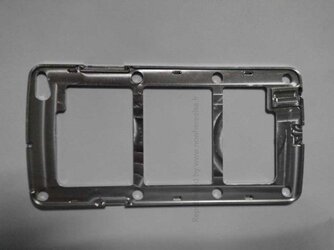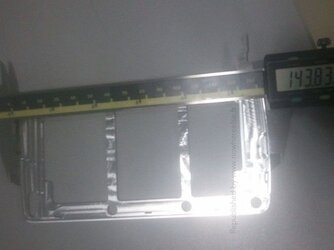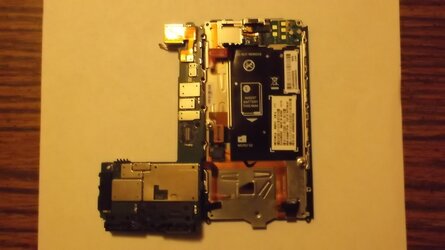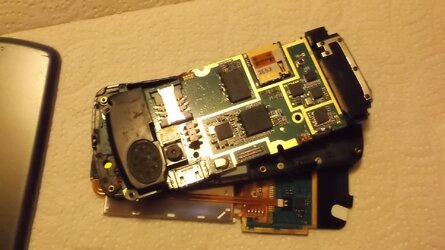- Joined
- Jun 30, 2010
- Messages
- 4,132
- Reaction score
- 2,285
- Current Phone Model
- Google Pixel XL/Galaxy Note 8
- DroidNCState
Pictures of Supposed Galaxy S5 Chassis Leak Online, Definitely Made of Metal

Pictures from France of a metallic chassis are making its way around. It is said to be the skeleton for the upcoming Galaxy S5 smartphone from Samsung. Rumors over the past few months, which state that Samsung will go sporting plastic bodies to move towards a more premium aka metallic body. If these pictures are to be believed, it appears Samsung has finally made a switch over to metal. What I have noticed from the pictures is Samsung Changed the placing of the camera from the middle of the backside on devices to the edge. In addition, Samsung usually puts the headphone jack on top of devices, but here the jack in placed on the bottom like on the Samsung Galaxy Nexus. Finally the charging port at the bottom of the device appears to be large enough for a USB 3.0 plug. Seeing that the Galaxy Note 3 sports USB 3.0,it would not surprise me that the S5 would have it also. Lets see how much more gets leaked before CES.

Source

Pictures from France of a metallic chassis are making its way around. It is said to be the skeleton for the upcoming Galaxy S5 smartphone from Samsung. Rumors over the past few months, which state that Samsung will go sporting plastic bodies to move towards a more premium aka metallic body. If these pictures are to be believed, it appears Samsung has finally made a switch over to metal. What I have noticed from the pictures is Samsung Changed the placing of the camera from the middle of the backside on devices to the edge. In addition, Samsung usually puts the headphone jack on top of devices, but here the jack in placed on the bottom like on the Samsung Galaxy Nexus. Finally the charging port at the bottom of the device appears to be large enough for a USB 3.0 plug. Seeing that the Galaxy Note 3 sports USB 3.0,it would not surprise me that the S5 would have it also. Lets see how much more gets leaked before CES.

Source




